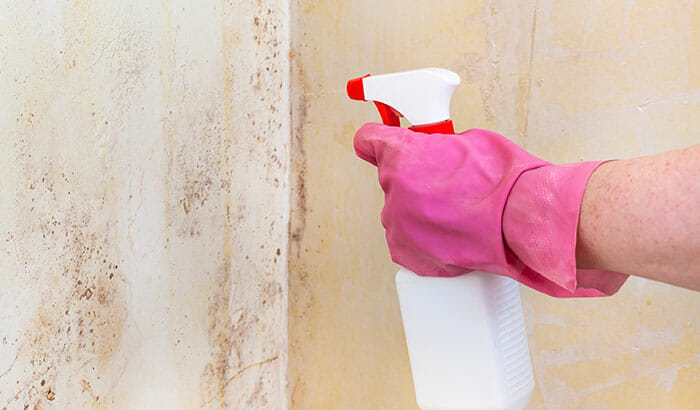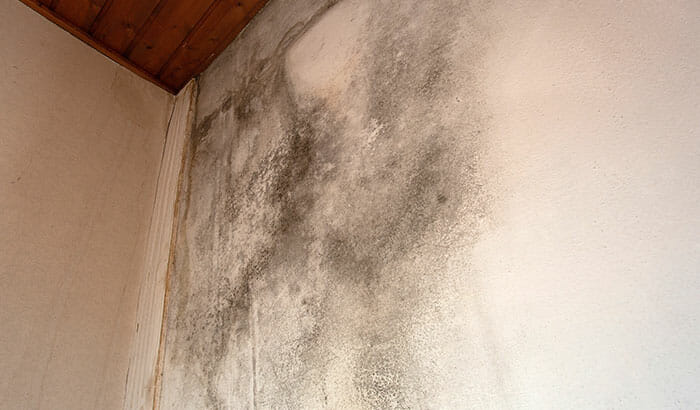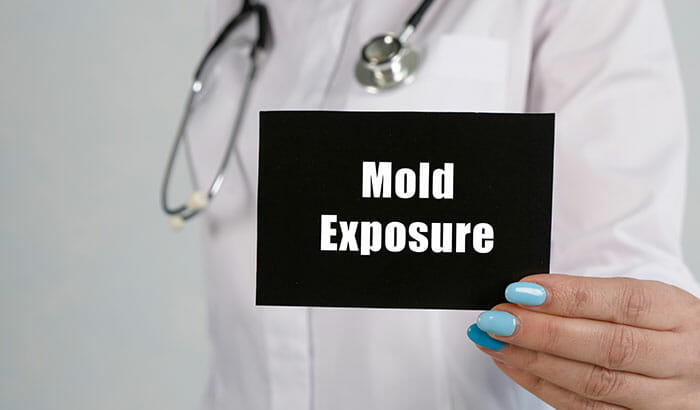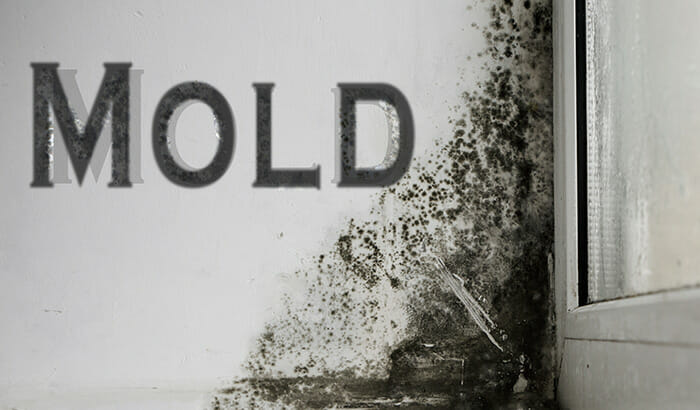Spraying a surface with bleach may not be enough to eliminate mold in your home; but what does kill mold and spores for good? Once mold gets a foothold in your home, it can be difficult to remove. You may think you’ve beaten it, but then you’ll have a warm, humid spell, and it all comes back in full force. So, how do you kill mold permanently?
What kills mold deep within the porous surfaces in your home? If you don’t penetrate the surface, mold will always come back. Unfortunately, bleach won’t penetrate it; but other cleaners will, including vinegar, baking soda, and others. But mold removal includes considering all the places spores may have spread; be prepared for a big job.
Getting rid of mold is more than just finding the right cleaning solution. So, after talking about what works to get rid of it, let’s dig deep into how mold spreads and survives. Eliminating it from your home will become more intuitive.
What Penetrates to Kill Deeply Entrenched Mold?
While chlorine bleach can kill just about any fungus, bacterium, or virus, it can’t disinfect below surfaces. This is because chlorine doesn’t soak into tiny pores. So, it kills everything on top but doesn’t touch the deeper mold that has extra moisture.
So what kills mold below the surface? Luckily, several common household cleaners can do it. Here are five of our favorites:
Vinegar – It’s inexpensive and natural, and you probably already have it in your pantry. Distilled white vinegar will kill most kinds of mold down to the mycelia. And vinegar is gentle enough to use regularly to prevent mold from growing.
Add undiluted distilled white vinegar to a spray bottle, and spray the surface. Let it stand for five to 10 minutes before scrubbing it off. Before using it, ensure the acid won’t harm the surface you’re cleaning.
Hydrogen Peroxide – As most of us are aware, hydrogen peroxide is a powerful antiseptic. This includes mold and works both on the surface and within it.
Fill a bottle with undiluted 3% hydrogen peroxide solution, and spray it directly onto the surface with mold. Let it soak in for 10 minutes, and then scrub with a stiff brush. Remember that hydrogen peroxide is a bleaching agent, so test it in a small area to be sure it won’t discolor the surface. Give it several minutes to work before moving on to other areas.
Borax – Again, you may already use this as a cleaner around your home. It’s a natural and environmentally friendly way to eliminate mold, even down deep.
Mix one part Borax with 16 parts water (one tablespoon per cup or one cup per gallon). Use a hard-bristled brush to scrub the infected surface. Repeat this process until it looks spotless, and allow it to dry. Leaving the Borax on the surface is safe to protect against future mold outbreaks.
Tea Tree Oil – You may think of this as a bug repellent or a topical remedy for rashes, but did you know it’s also an effective antiseptic?
Combine one tablespoon of tea tree oil with one cup of water in a spray bottle, and shake vigorously. Spray directly onto the mold. Let it sit for 30 minutes to an hour to reach the mold deep under the surface. The surface mold should wipe away easily with a cloth or towel. Tea tree oil will also help deodorize the area.
Baking Soda – This is another one you can probably think of many uses for, including deodorizer, sanitizer, and frequent food ingredients. Baking soda kills many varieties of mold, including some types that vinegar doesn’t kill, so you may find it helpful to use both separately.
Add one teaspoon of baking soda to two cups of water in a spray bottle. Shake until thoroughly combined. Spray onto a moldy surface, and leave it for several minutes to penetrate the roots. Scrub the surface with a sturdy brush, rinse with water, and let it air dry. Repeat this process until you’re confident you’ve removed all the mold.
How Mold Spreads
Mold spreads as microscopic airborne spores, but the conditions must be suitable for them to grow. They need moisture first and foremost, but dark, warm environments are what they like most. If these conditions exist where there is food, there will be mold.
When mold starts to grow, it grows quickly. You could have a noticeable bloom within 24 hours. It consists of single-celled fungi that multiply exponentially and can send roots (mycelia) deep within any porous surface. They fill every pore and crevice they can find that has sufficient food, such as wood, drywall, carpet, paint, plaster, and of course, our food.
This is why it isn’t enough to wipe or scrub the surface of a mold outbreak until you can’t see it anymore. You have to go as deep within surfaces as the mold does, or it will regrow as soon as conditions become favorable again.
How to Eliminate Mold Spores
You’re not finished just because you’ve thoroughly cleaned the areas where you’ve seen mold. Many mold spores can be released during the cleaning process, and you’ve got to contain them. So here are a few tips.
- Before you start cleaning, use drop cloths to cover nearby clean surfaces.
- Wrap unsalvageable items in plastic before disposing of them.
- If you’re using fans to dry the area, turn them off until you finish the mold removal.
- Plan on quickly cleaning the outbreak area’s walls, floors, and furniture.
- Once you finish cleaning, keep the area dry.
Let Bull Matrix Worry About Your Mold Remediation
Mold is everywhere, and small outbreaks are common. But if you notice several spots of mold or a significant water incident, it’s best to bring in a professional. We know what kills mold for good, we can be there quickly, and we have the time to ensure your home or office is mold-free. Contact Bull Matrix today.




